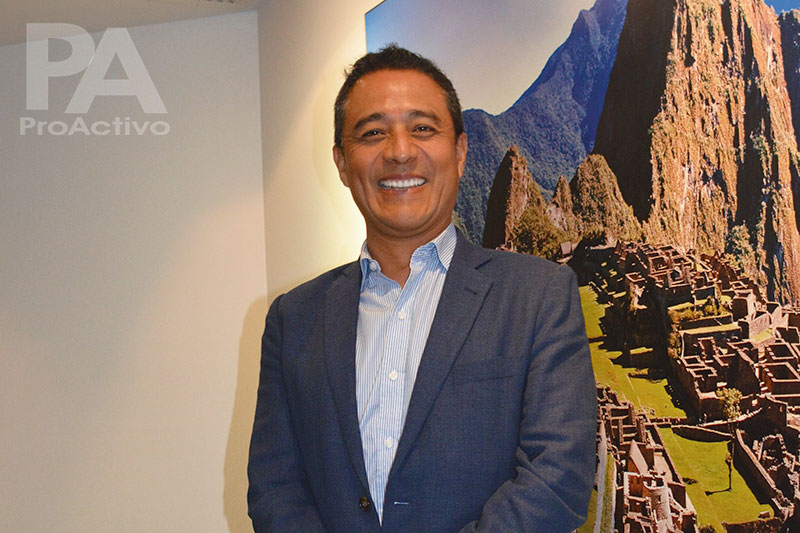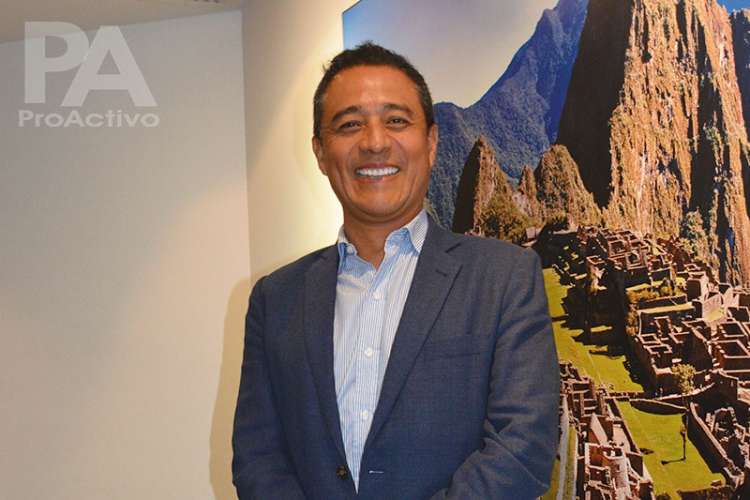ProActivo | Luis Rivera, president of the IIMP launched a proposal of interest. “If only in Peruvian regulations by an emergency decree or a fast mechanism, it is authorized that the operating permits have a flexibility of up to 10%, all these mines could enter an expansion process immediately. Do you know what 10% of Antamina means, 10% of the Bambas, 10% of Cerro Verde, 10% of Southern Peru? The sum of those 10% makes only one Quellaveco, ”he said in a revealing interview for ProActive.
What offer does Peru take to the world’s investors in PDAC?
Fulfilling our role of promoting the industry, one of the pillars of the Institute of Mining Engineers of Peru (IIMP) is to put Peru before the international investor.
This is because the (big) capitals are in the global markets. That is why we will start the theme by showing the Mining Competitiveness Index (ICM) and insist on one of its five components: the geological potential, which remains attractive, is number one and it is what we will insist on to know it more.
That will be the base argument of our presentation at PDAC.
What virtues does the geology of Peru have?
We are still the second copper producer, but in reserves we are the first. We are among the fifth to sixth gold producer. And seconds in zinc and silver, of the latter we went first many years, we competed with Mexico.
However, the acquisition of Tahoe Resources by Pan American Silver is great news, because one of the largest silver producers in the world is in the country, along with national companies such as Buenaventura, Hochschild and others.
Could precious metals have a boom next?
Peru remains an attractive country and we could once again have the first place in silver production, which in recent months has very attractive prices.
Its price was stable, even with a slight downward trend, but in the wake of crises in the world last year, precious metals are once again a refuge metal. And because of the coronavirus, that feeling of gold and silver has risen.
How much does coronavirus affect for mining investments?
The price of copper fell dramatically, although far from low, historical levels – it remains an attractive price – and in contrast the price of gold has risen.
Peru is a polymetallic country (with an important production in gold and copper) unlike our neighboring country Chile.
That is a competitive advantage for the investor because he can invest in polymetallic or bimetallic mines. A copper-gold mine is a very attractive mine.
Has the current regulation lowered the appeal for mining explorations?
There we have 2 flanks. The ICM shows that in regulation, regulation and taxes, we are not the most competitive.
We have put this theme on the billboard, we are now showing it at the I Congress of Competitiveness and Social Sustainability organized by the IIMP.
It will be the point of debate.
The geological potential must be transformed into value and especially growth, and hopefully in poverty reduction and development of our people who need it so much.
Production costs in Peru are quite low
This is because one of the most important costs – electricity – has a very competitive price. Comparable to those in Australia and almost a third of what it costs in Chile or Colombia.
Our electricity network is one of the most studied and best developed at the level of mining countries.
We have 500 kV trunk networks and subnets that reach 220 or 110, different operations. The 500 kV network that goes south from Montalvo in Arequipa that connects the center with the south was made by state initiatives, but by mining demand. The network that goes north, the parallel network, another 500 kV network that they are building makes Peru very solid in its electrical access, which is not the case in all countries. For the company I work in (Gold Fields) I have access to African countries and one misses the Peruvian electrical configuration. It is a competitive advantage.
And how is the connectivity?
We can not complain. High voltage electrical connectivity is given, it exists.
The step is how to make it benefit your people as well.
And in telephony and internet connectivity?
It is a pending task. Communication to the north is bad. The optical fiber reaches certain sectors, in the high Andean zone it is very scarce.
Remote work cannot be done with a 3G. Communicating with a control center in Lima or Arequipa with a mine that is 100 or 200 kilometers away is impossible. Companies have to face their own optical fiber.
When 4G and 5G arrive, the benefit will be for everyone.
Will they present the ICM in PDAC?
We will present it as a more technical and metric tool, unlike the Fraser index, which is a very valuable survey. We are not going to compete at all with Fraser, but we believe that the IIMP index could be a complement to risk analysis, in countries where it can be used.
What is the position from the IIMP?
Show that we have opportunities for improvement in regulation and that we must recognize that when the president announced the change in regulations last year he participated in the IIMP and other entities.
As president of the IIMP, how do you feel to see that the entity has strengthened to the level of government participation?
Satisfied, I think it’s a job my predecessors started. The work of Antonio Samaniego and Víctor Gobitz has been incredible. We have managed to follow that line. Today the IIMP already has 4,000 associates, with presence in several forums.
Last year we managed to be accepted as members of the ICMM (International Council of Mining and Metals) of the International Council on Mining and Metals, the governing body of mining companies globally and where very few non-business institutions have been accepted. Therefore, we have access to all the production of standards and can transfer them to the national mining activity and practice.
I feel proud and happy. It will be a job that our next president will have to keep doing.
What is the importance of ICMM?
Associates the big mining houses.
Anglo American, BHP Billiton, MMG, Glencore, Gold Fields, Barrick and Newmont, among others. They form an independent Council that gives and demands codes and standards; and practices to its members and encourages the creation of high-level standards that often exceed any national regulation.
Your opinion about Tía María.
Tía Maria will continue to be an analysis project for the IIMP, we are optimistic.
The work of the company exists. There is a much greater acceptance than what existed in the community, it is a matter of continuing to work on it. We believe that we should all participate in the solution of this issue, including the government, which is the main call to put cold cloths and to call for dialogue.
Finally, what are the actions that can be done?
We have to see Peru in its entirety because mining activity transcends governments and is here to stay for decades. We must see the long term without losing sight of the short term.
And Peru in that is an attractive country, the deposits are here for investments that can transcend 20 years.


